It’s a dark and windy night in late October. Even though you know better, you’re walking by yourself in the shady part of town, your eyes darting to every dark crevice that might provide shelter for unseen perils. Is that….footsteps behind you?! And didn’t the news say this area is….gulp….dangerous at night? Your heart rate skyrockets, your palms start to sweat, adrenaline is coursing through your veins. In fact, your whole endocrine system is turned up to max AHWHATWASTHATSOUND?!!! Ah, just some crunchy leaves, ha. Well this whole scenario is still far less terrifying than learning one of the most treacherous systems of the human body - the endocrine system.
The Endocrine System on the MCAT
The endocrine system is a relatively high-yield topic on the MCAT, and it makes sense why - this system controls processes in nearly every part of the body. Growth and development, metabolism, mood, reproduction, heart rate, appetite, sleep, and body temperature are just some of the bodily functions that are controlled or influenced by the endocrine system. And with all those functions, it’s no surprise that there’s a scary number of glands, hormones, and feedback mechanisms that you’ll need to remember come MCAT test day.
But don’t run off just yet, because at Sketchy, we’re all about showing students that seemingly “monstrous” topics like the endocrine system are actually not as spooky as they seem. So what part of the endocrine system scares you the most? Is it the adrenals? Or maybe the thyroid gland? Or perhaps the pituitary gland and its almost spine-chilling array of hormones? AH, I’m getting sweaty just thinking about it! But fret not, because Sketchy has tackled all of these topics and more in our endocrine unit.
Tricks and Treats and Insulin on the MCAT
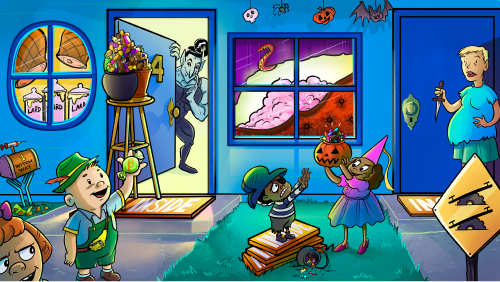
To show you exactly how Sketchy can help you soak up endocrine facts into your brain like a sponge and keep them there long after MCAT test day, let’s venture into a very Sketchy neighborhood for everyone’s favorite insulin-spiking fall activity - trick-or-treating.
Meet Langerhansel and His Beta-Scotch Candy
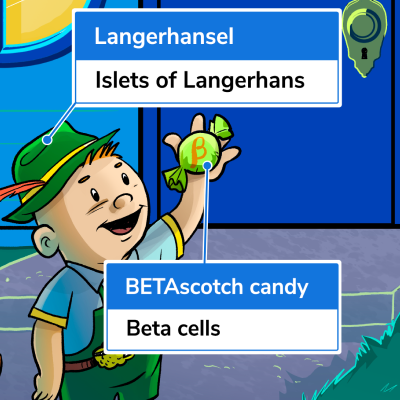
And speaking of insulin, that’s the hormone that this appropriately spooky sketch features. If you recall, insulin is a peptide produced by pancreatic beta cells found within clusters of cells known as the Islets of Langerhans. If you don’t recall, we included a trick-or-treater dressed up as Langerhansel holding up a piece of beta-scotch candy to ensure you never forget.
Buckets Full of Glucose Candy
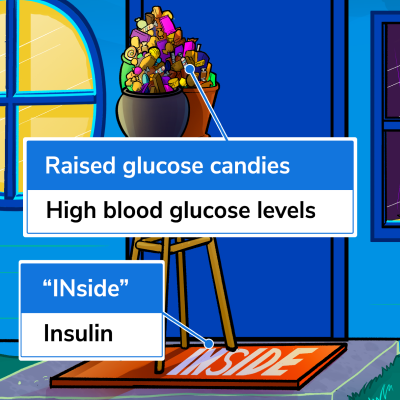
Insulin is released from the pancreas in response to high blood glucose and helps glucose get INside cells to bring blood sugar levels back into normal range. To help you remember this fact, this sketch prominently features a bowl of candy raised HIGH up on a barstool and a doormat inviting candy-laden guests to come INSIDE.
Glucose Transporters - GLUT2 & GLUT4
And we didn’t stop there! We’ve even included symbols to help you remember HOW glucose gets inside cells. You see, glucose isn’t able to cross the plasma membrane on its own - it needs the help of transport proteins, which are appropriately called glucose transporters, or GLUTs, to get in. Humans have 14 different kinds of GLUTs, but this sketch focuses on two of the most important ones - GLUT2 and GLUT4.

GLUT2 is primarily found in the liver and pancreatic beta cells. And to ensure that you’ll remember this fact come the MCAT test day, we’ve included a 2-shaped tentacle slithering by a rather liver-esque window, and a zipper conspicuously shaped like a 2 on Langerhasel’s pancreas fanny pack. And because GLUT2 is an insulin-INdependent transporter, both of these symbols are AWAY from the INSIDE doormat.
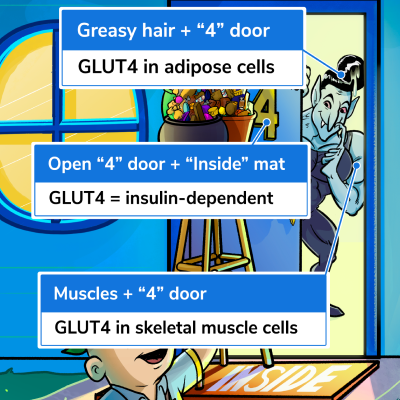
As for GLUT4, look no further than apartment number 4. In contrast to GLUT2, GLUT4 only opens when insulin is present, meaning it's an insulin-DEPENDENT transporter. That’s why the INSIDE doormat is right outside apartment 4. And to help remind you that GLUT4 is found in adipose and muscle cells, we were sure to make the greased-up occupant of apartment 4 uncomfortably jacked.
Glucosey Candy Blood Sugar Levels
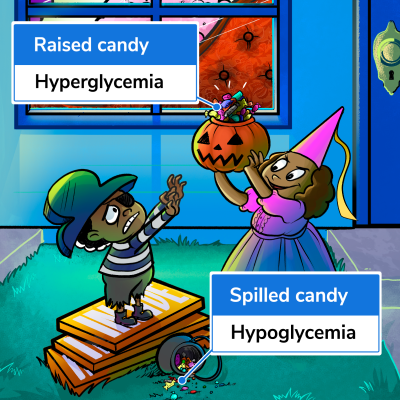
Then there’s those hair-raising times when insulin levels get too high, which is one cause of low blood sugar. This fact is exemplified in this sketch by a giant stack of INSIDE mats next to a spilled bucket of glucosey candy.
On the other side of the (chocolate) coin, underproduction of insulin can cause blood sugar levels to get too high. We illustrated this with a taunting trick-or-treater, who’s not standing on any INSIDE mats, holding her glucosey candy HIGH up in the air.
Hyperglycemia is actually one of the most important signs of a group of endocrine diseases known as diabetes mellitus. Type I and type II diabetes are covered at the very end of the Insulin video, so if you’re interested in learning all the sugary details, we highly recommend checking it out. It’s…pretty sweet!
You know what else is sweet? The fact that you probably remember a whole lot more about insulin for the MCAT now than you did five minutes ago. All thanks to a memorable All Hallow’s Eve-themed sketch that was designed to help the information stick. And we’ve got thirteen (ooooh, spooky) more videos in our endocrine unit, including content covering the hypothalamic-pituitary axis, thyroid hormones, the adrenal glands, and more! So next time you're confronted with the so-called monster that is the endocrine system, you’ll have the confidence to face it head on, because you’ve got Sketchy MCAT as your secret weapon.
